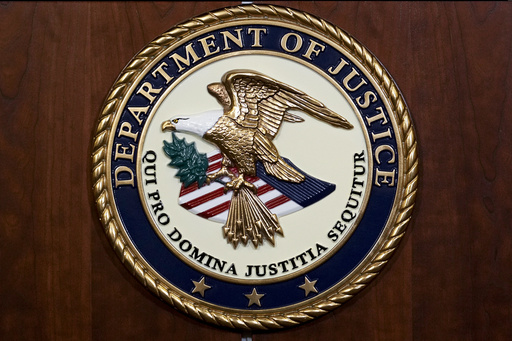WASHINGTON — An unsettling trend is emerging as law enforcement agencies across the United States intensify efforts to combat the rise of child sexual abuse imagery generated by artificial intelligence. This disturbing form of exploitation ranges from altered images of real children to entirely fabricated digital figures. Officials from the Justice Department are emphasizing their commitment to prosecuting individuals who misuse AI technologies for these purposes, urging states to adapt their laws to encompass such offenses.
“We need to constantly remind the public that creating or distributing this kind of content is a crime that will be taken seriously and prosecuted whenever there is enough evidence,” stated a leading figure in the Justice Department’s Child Exploitation and Obscenity Section. “If anyone believes they can evade justice, they are mistaken. Accountability is coming.”
Recent actions by federal authorities mark the progressive adaptation of existing laws to tackle AI-generated child sexual abuse imagery. Notably, the Justice Department has initiated what appears to be the first federal prosecution involving completely AI-created content. In another case from August, a soldier stationed in Alaska was apprehended after he reportedly manipulated innocent images of children he was familiar with, turning them into sexualized content using an AI chatbot.
As technology rapidly evolves, advocates for child protection are pressing for measures to curb the misuse of such innovations. Their critical concern is that the proliferation of realistic yet fictitious images could dilute investigative efforts aimed at rescuing actual victims, potentially leading to wasted resources on non-existent cases.
Legislators are responding by introducing numerous bills specifically designed to empower local prosecutors to pursue violations involving AI-generated “deepfakes” and similar harmful imagery. This year alone, more than a dozen governors have enacted laws that specifically target digitally manipulated child sexual abuse images, according to insights from child protection organizations.
“We’re essentially racing to keep pace with technology that outstrips our current legal frameworks,” commented a district attorney in California. This attorney supported new legislation clarifying that AI-generated child sexual abuse material is categorically illegal in California, acknowledging that his office previously could not act on cases of AI-generated content due to legal ambiguities regarding the depiction of real children.
According to law enforcement experts, AI-generated depictions pose risks of grooming vulnerable children, and even without physical abuse, such alterations can deeply harm minors. A case in point is a young actress who testified about her experiences with AI manipulations of her image, advocating for changes in the law after her likeness was used to create illicit content online.
Experts note that easily accessible open-source AI models are commonly exploited by offenders, who often share strategies on dark web forums to enhance these tools for creating explicit content. A previous report highlighted how a data source for prominent AI image generators contained links to sexually explicit images, which has since been addressed through the removal of these problematic links.
In the wake of increased scrutiny, leading tech companies have pledged to collaborate with organizations dedicated to combating child sexual exploitation. However, many experts argue that more proactive measures should have been implemented at the outset to mitigate the risks associated with such technologies.
The National Center for Missing & Exploited Children’s CyberTipline received approximately 4,700 reports involving AI technology last year, which, while modest compared to the over 36 million total reports of child sexual exploitation, still indicates a concerning trend. As of October this year, they are receiving around 450 reports monthly of AI-related content, suggesting a potentially significant underreporting due to the realistic nature of these images.
Investigation efforts have become increasingly time-consuming, with law enforcement personnel often spending hours determining whether an image depicts a real child or is AI-generated. Enhancements in AI technology complicate the distinction that once existed, further contributing to the challenges faced by investigators.
While federal law provides existing tools to address offenders producing such material, the landscape is evolving. The landscape has shifted following a Supreme Court decision in 2002 that invalidated a federal ban on virtual child sexual abuse material. Nevertheless, a specific law enacted the following year criminalizes the creation of visual depictions, including drawings, of children engaged in sexually explicit activities, regardless of whether the depicted minor is real.
The spotlight remains on a recent lawyer’s defense invoking First Amendment rights for a software engineer accused of generating explicit imagery using an AI model. Meanwhile, recent convictions underscore the ongoing crackdown, including a North Carolina psychiatrist found guilty of manipulating children’s images for illicit purposes.
Authorities reiterate their determination to tackle these offenses head-on. “Our legal framework is equipped for prosecution. We are committed, and we have the necessary resources,” emphasized a Justice Department official. “This issue won’t fall by the wayside simply because no real child is involved.”


